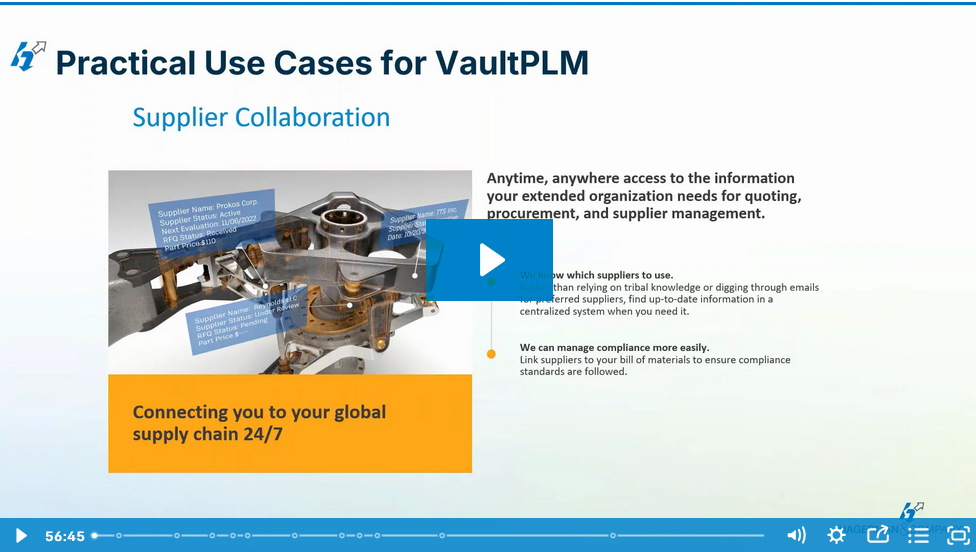There is a lot of conversation and some confusion about why companies should implement Product Lifecycle Management (PLM) solutions to help manage their business processes.
I’ve heard the argument that if you use CAD, save and backup your designs while making and documenting revisions, creating BOMs, and collaborating with other departments, suppliers and customers on product requirements, you are most likely already doing basic PLM. If that’s the case, what’s the big deal about PLM? If you are among the group of companies doing “basic PLM,” you are most likely in a mixed environment of digital and manual processes, utilizing systems that don’t communicate well … and most likely getting mixed results. Product Data Management (PDM) is great for automating CAD data vaulting and implementing workflow structure within the design environment.
So how can PLM help a company in the areas traditionally not addressed by a PDM solution?
I remember working as a mechanical designer in the 80s and seeing firsthand how 2D and 3D CAD revolutionized the design process by not only making designs and revisions faster but also reinventing the entire design processes through the reuse and sharing of digital data. Companies could leverage the CAD solution to not mimic their current, manual design process but to reinvent the process to be much more efficient. PLM can do the same for your enterprise business processes. PLM can help companies move beyond the benefits of PDM and extend the product lifecycle process throughout the enterprise by integrating other departments to address product safety regulations, compliance assurance, product quality and product maintenance, just to name a few. As a result, you can bring products to market faster, more efficiently and ultimately more economically.
With a properly designed PLM solution, a company should reap the same type of process efficiency benefits throughout the entire enterprise as seen in the CAD reinvention of the design process. I’ve read “If you have a mess, don’t try to automate it. You can end up with an automated mess”. PLM can help you focus on simplifying the processes, help you consider new ways to manage the processes, integrate what is working, and finally automate your processes. The results can mean positive effects of reducing cost, margin expansion, improved products, improved time to market, higher revenue growth and product innovation.
If you design and implement your new processes in logical, progressive steps, PLM will add value to the entire enterprise and solve business problems. By employing a rapid start implementation philosophy where roles and workflows are predefined, a company can move forward with PLM quickly. PLM will improve the company’s workflows and processes by integrating key departments in the PLM processes that may be left out of a typical PDM implementation.
So where does that leave us? Are you struggling to manage the alpha to omega, start to finish, of your products? Are you concerned about a manageable, repeatable, logical process to address product safety regulations, compliance assurance and quality concerns?
Hagerman and Company has over 20 years of data management experience. We can help you solve problems and achieve the benefits of PLM for your unique business needs.




Comments